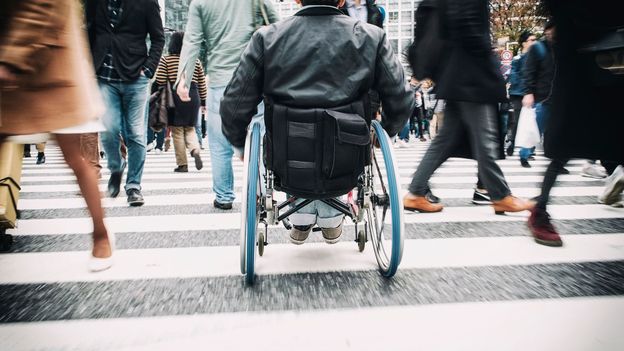3 July 2023
By Martin Heng,Features correspondent
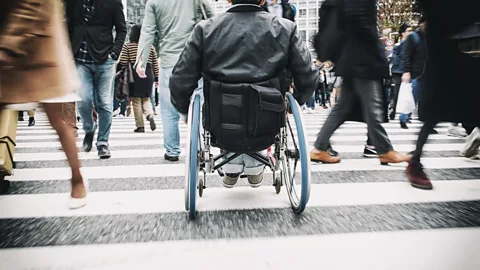 Rich Legg/Getty Images
Rich Legg/Getty Images
(Credit: Rich Legg/Getty Images)
With one in six people living with disability, ensuring that cities around the world are accessible to all is vital. But which cities are doing it best, and how?
What do disabled travellers look for when choosing a city to visit? This is important not only to those of us with disability, but also for cities themselves as they seek to tap into a large and growing accessible travel market.
In 2018 alone, the value of the so-called “purple pound” (the spending power of disabled people) to UK tourism was estimated at £15.3bn; while 27 million travellers with disabilities in the US took 81 million trips and spent $58.7bn (£45.8bn) in that same year. As tourism recovers from the ravages of Covid-19, the business case for not excluding the 1.3 billion people living with disability – one-sixth of humanity – has become even more compelling.
A wide-ranging survey by the Valuable 500 of 3,500 PWD in five countries – the US, UK, Australia, China and Japan – around their travel habits and experiences provides invaluable insight into this question. The 2022 survey not only highlights the barriers to travel for people with disability (PWD), but respondents were also asked to nominate the cities they found most accessible and why, from which a top 10 was compiled.
The resulting data provides great understanding into what makes a city attractive to disabled travellers, from the range of accessible accommodation to the availability of accessibility information. Here, we explore four of the top cities, explaining what makes them a good place for PWD to visit and bringing additional insights from knowledgeable residents and visitors.
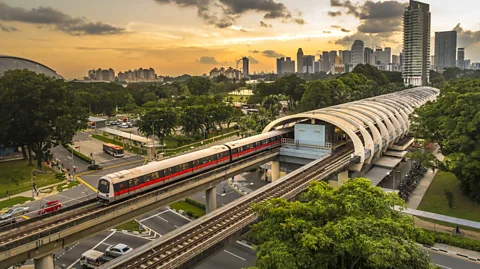 Calvin Chan Wai Meng/Getty Images
Calvin Chan Wai Meng/Getty Images
Singapore’s accessible public transport makes getting around the city easy for wheelchair users (Credit: Calvin Chan Wai Meng/Getty Images)
Singapore has always been an easy travel destination for many compared with much of Asia, partly due to the excellent infrastructure and amenities, and partly because English is the lingua franca. But as a disabled traveller, it’s the high degree of accessibility that makes it especially attractive.
In Singapore, the question is not, “What is accessible?” but rather, “What isn’t?”
A majority of survey respondents nominated Singapore due to its accessible public transport, which makes getting around the city a breeze. Unlike most underground metros, there is level access to every carriage on Singapore’s MRT, which affords wheelchair users and people with impaired mobility both independence and dignity.
In addition, more than 95% of pedestrian walkways, taxi stands and bus shelters are accessible to people living with a variety of impairments, and more than 85% of public buses are wheelchair-accessible.
According to Nilesh Joshi, who relocated from Mumbai to Singapore eight years ago, “For someone like me, having mobility challenges but not [using] a wheelchair, the city offers huge convenience and allows me to independently move around using public transport and enjoy public amenities.”
Deaf and hearing-impaired public transport users are also well catered for: as deaf resident Adrian Yap remarked, “Whenever there is any announcement on the trains, we can see the instructions written on the screen.” Yap also noted that “train officers are well trained to communicate with deaf people”, underscoring the importance of disability awareness training.
 Tuul & Bruno Morandi/Getty Images
Tuul & Bruno Morandi/Getty Images
Gardens by the Bay in Singapore is fully wheelchair-accessible (Credit: Tuul & Bruno Morandi/Getty Images)
Overwhelmingly, however, the most important factor for survey respondents was not physical accessibility but being treated with understanding and respect. This sentiment was echoed by Joshi, who said, “While infrastructure and government spend is one thing, another major aspect that makes a big difference for mobility-challenged persons are the people of Singapore and their culture. Always smiling, welcoming, helpful and soft-spoken, they make a big difference for PWD to feel accepted and looked after.”
One of Singapore’s major tourist attractions, Gardens by the Bay, a unique and enthralling complex of horticultural displays, is fully wheelchair-accessible. There’s a free shuttle service for wheelchair users and wheelchair rental for just $2 dollars per day – indicative of the increasing importance of intergenerational travel, particularly among Asian communities.
The city’s newest major attraction, a phenomenal architectural feat connecting the colonial-era City Hall and former Supreme Court to create the National Gallery, is a model of accessibility. It has a comprehensive, downloadable access guide – developed with the Disabled People’s Association of Singapore – which allows visitors to plan their visit and source information on the accessibility of specific exhibitions or festivals.
The visitor economy – not just tourism, but also the enormously valuable MICE market – is all-important to Las Vegas. Tourism accounts for 20% of Las Vegas’ GDP (compared with a national average of 6%) and 30% of jobs (double the national average).
Remarkably, it’s home to 14 of the world’s largest 25 hotels and, according to prominent wheelchair blogger John Morris, who maintains the highly informative wheelchairtravel.org and visits the city three or four times a year, “The city has one of the highest concentrations of accessible hotel rooms and suites in the world, with hoteliers eager to attract the disability dollar.”
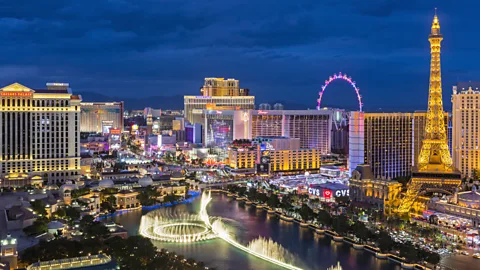 Westend61/Getty Images
Westend61/Getty Images
Las Vegas has one of the highest concentrations of accessible hotel rooms in the world (Credit: Westend61/Getty Images)
Many Las Vegas hotels also have a designated Americans with Disabilities Act (ADA) specialist to assist guests with disabilities – and make sure that the hotel doesn’t fall foul of the ADA in this litigious country.
Almost 60% of US respondents to the Valuable 500 survey nominated Las Vegas because of its wide variety of accessible accommodation, and almost 50% for the accommodation’s proximity to attractions. As Morris pointed out, “The city’s expansive resorts can meet every need, with accommodation, dining, spas and entertainment all under one roof.”
Casinos and showrooms cater well for both wheelchair users and visitors with other impairments: staff are trained to assist vision- and hearing-impaired people at the gaming tables, and craps dealers will place bets for those who need assistance. Bingo can be played using Braille or large-print cards or even using electronic machines. Some hotels even offer free gaming lessons with sign-language interpreters.
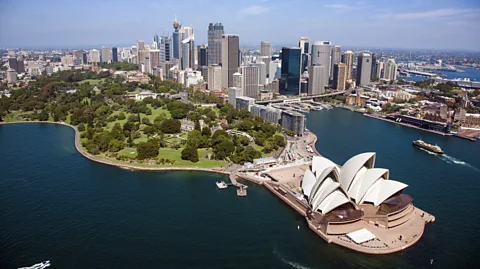 Airphoto Australia/Getty Images
Airphoto Australia/Getty Images
Sydney Opera House offers a range of access services, performances and dedicated programs for PWD (Credit: Airphoto Australia/Getty Images)
Julie Jones, administrator of the Accessible Sydney Facebook group and publisher of Travel Without Limits, the world’s only print magazine dedicated to accessible travel, eulogises the Australian city’s accessibility. She and her wheelchair-using son Braeden “love exploring Sydney and find it to be a wonderfully accessible city”.
The majority of Sydney’s main attractions, including most of the city’s historic National Trust properties, are accessible by wheelchair. The iconic Sydney Opera House has a suite of accommodations for people with access needs, including accessible performances, access programmes and tailored mobility tours. And after years of campaigning, lifts were finally installed at the Harbour Bridge four years ago.
Being able to walk or wheel alongside some of the best views of the city is a treat
Jones added: “The majority of the public transport system is accessible to wheelchair users, including our Sydney ferries, which offer the best views of our beautiful harbour. There are kilometres of level accessible paths around the harbour linking the Opera House to Darling Harbour and beyond. Being able to walk or wheel alongside some of the best views of the city is a treat.”
Jones’ experiences reflect those of the survey respondents, who rated the city highly for its accessible transport links. The city’s public transport network, which includes ferries, buses, light rail (trams) and rail, is almost wholly accessible, although assistance from drivers is often required.
“Recently, our Sydney rail network became more accessible to people with hidden disabilities with the staff now trained to recognise and respond to travellers wearing the hidden disabilities lanyard,” Jones said.
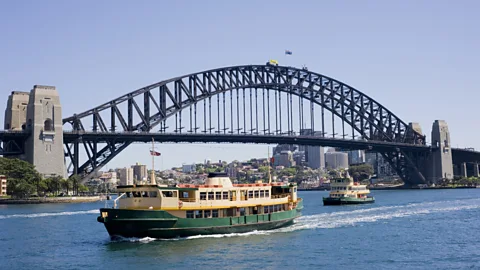 Deejpilot/Getty Images
Deejpilot/Getty Images
Sydney’s ferries are accessible, and are an excellent way to explore the city (Credit: Deejpilot/Getty Images)
In addition, vision-impaired visitors will benefit from wide, well-maintained pavements with plentiful tactile ground surface indicators, as well as the Legible Sydney Wayfinding System that employs more than 2,100 tactile (for touch-reading) and Braille street signs, information pylons and digital technology.
Provision of information about accessibility – a key requirement for PWD to plan their trip – is where Sydney also scored highly. In addition to Transport New South Wales accessibility page, the city has an Accessible Sydney site that’s chock-full of useful information arranged thematically: museums and galleries; history and heritage; outdoors and wildlife; bucket-list attractions; and getting around.
London also scored highly in the survey, with 57% of respondents nominating it for its accessible transport links, while almost half chose the capital because its cultural attractions have good accessibility support and facilities. Many major museums and galleries have placed a particular focus on accessibility, including the British Museum, the National Gallery, the Tate Modern and the Natural History Museum.
There’s also a wealth of information available for PWD to plan holidays and excursions. Visit London’s Accessible London page is a rich resource that links to AccessAble’s professionally audited, searchable database of detailed access guides to attractions, hotels, shops and restaurants, among other venues.
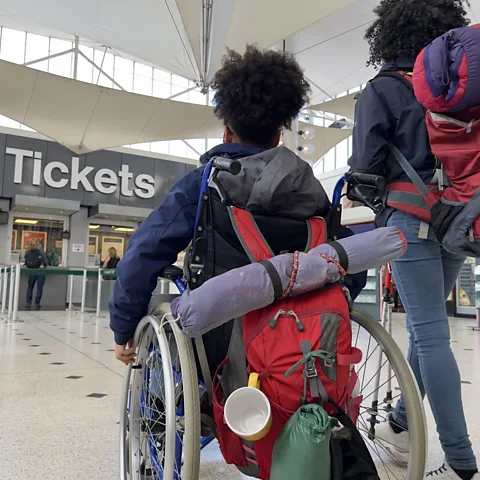 Peter Cade/Getty Images
Peter Cade/Getty Images
About one-third of London’s Tube stations and half of overground stations have step-free access (Credit: Peter Cade/Getty Images)
AccessAble’s head of marketing, Carrie-Ann Lightley – a wheelchair user and formerly information service manager at Tourism for All UK – is realistic but upbeat: “London, as with any large city, can be challenging to navigate as a wheelchair user, but there are pockets of excellent accessibility that have me returning to the same areas time and time again. The South Bank is a particular favourite: I love the wide, smooth walkways and easy access to Blackfriars station. A slow roll along the river, stopping at food stalls and watching the street performers is my ideal way to spend a weekend afternoon.”
London, as with any large city, can be challenging to navigate as a wheelchair user, but there are pockets of excellent accessibility
In line with the survey responses, most forms of public transport are very accessible, with all buses wheelchair-accessible (if often crowded), as are all tram stops and most ferry piers. However only about one-third of Tube stations (and just half of overground stations) have step-free access, so careful planning is necessary before travelling.
As a blind travel blogger, Sassy Wyatt finds London easy to get around: “I can rock up to any Tube station and use the turn-up-and-go service provided by Transport for London: a member of staff will guide me through the station and get me onto the right line, another member of staff will meet me at the other end and escort me to the exit, saving me lots of mental fatigue.”
She recently tested the newly opened Elizabeth Line that runs to Heathrow airport and notes that while “there is a lot less seating for able-bodied passengers, there is now much more space for guide dogs, wheelchair users and passengers taking luggage”.
While visitors can use Transport for London’s accessibility page for comprehensive access information, including downloadable accessibility maps and a tool to plan accessible journeys, Wyatt relies on TFL GO, “a fully accessible and useful app allowing you to plan a journey and use the step-free category to give you the most accessible routes via bus and Tube across London”. Transport for London also embraces the hidden disabilities sunflower program, which is gaining wider recognition in the UK.
Martin Heng was formerly Lonely Planet’s Accessible Travel Manager, and is now consulting with organisations such as APEC, Tourism Australia and the Global Sustainable Tourism Council to assist businesses to become more inclusive and accessible.

